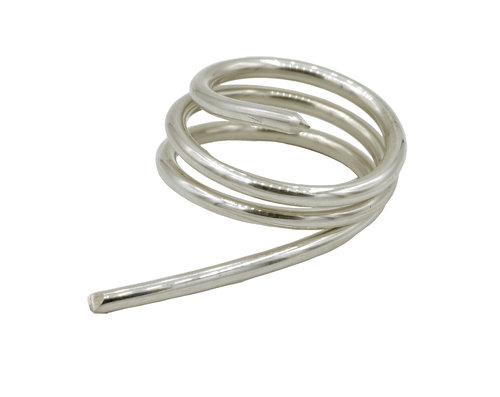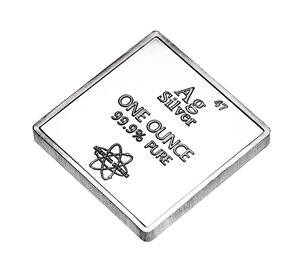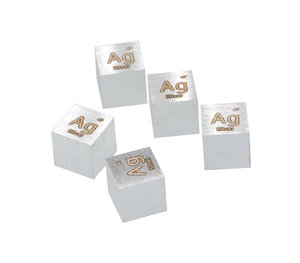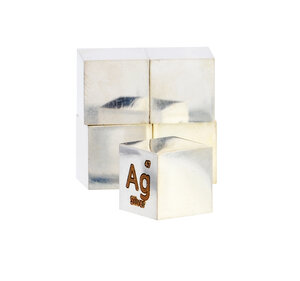Ag – Silver
Silver is more than an investment or store of value, rare because Ag rocks are hard to find…
it’s incredibly important for today’s lifestyle, in electronics, in economic trade, and much more.
Find something like one of these below around you Rockhounding and consider yourself a lotto winner,
or add the following to your element collection as an Ag representation and learn more here!
Showing all 24 results
-

Acanthite
$86.00 -

Acanthite
$85.00 -

Acanthite, Silver & Barite
$95.00 -

Bromargyrite
$220.00 -

Bromargyrite, Conichalcite & Mimetite
$95.00 -

Calaverite
$500.00 -

Calaverite
$350.00 -

Dyscrasite
$55.00 -

Iodargyrite
$250.00 -

Krennerite & Hessite
$240.00 -

Miargyrite
$95.00 -

Native Silver Wire
$95.00 -

Perroudite
$65.00 – $100.00 -

Schirmerite
$90.00 -

Silver & Copper
$175.00 -

Silver Wire
$90.00 -

Stromeyerite
$160.00 -

Sylvanite
$150.00 -

Sylvanite
$140.00 -

Sylvanite
$200.00 -
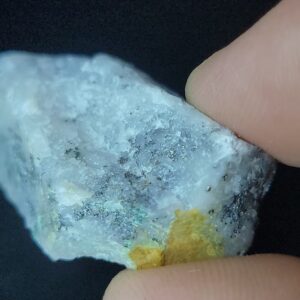
Sylvanite
$110.00 -

Sylvanite
$220.00 -
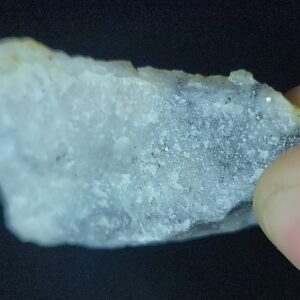
Sylvanite
$110.00 -
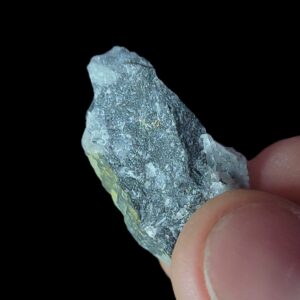
Sylvanite
$110.00
Acanthite
Native Silver Wire
Bromargyrite
Iodargyrite
Sylvanite
Calaverite
Schirmerite
Stromeyerite
There are ~301 named minerals containing Silver listed on mindat we have yet to add to our shop:
| Acanthite | Ag2S | Diaphorite | Ag3Pb2Sb3S8 | Penzhinite | (Ag,Cu)4Au(S,Se)4 |
| ‘Ag-Analcite’ | AgAl[Si2O6] · H2O | ‘Dürfeldtite’ | Pb(Ag,Cu,Fe)MnSb2S6 | Perroudite | Hg5Ag4S5(I,Br)2Cl2 |
| Agmantinite | Ag2MnSnS4 | Dyscrasite | Ag3Sb | Petrovskaite | AuAgS |
| Aguilarite | Ag4SeS | Eckerite | Ag2CuAsS3 | Petrukite | (Cu,Fe,Zn,Ag)3(Sn,In)S4 |
| Alburnite | Ag8GeTe2S4 | Écrinsite | AgTl3Pb4As11Sb9S36 | Petzite | Ag3AuTe2 |
| Allargentum | (Ag1-xSbx) | ‘Electrum’ | (Au,Ag) | Pirquitasite | Ag2ZnSnS4 |
| ‘Andorite’ | AgPbSb3S6 | Empressite | AgTe | Polloneite | AgPb46As26Sb23S120 |
| Andreadiniite | CuHgAg7Pb7Sb24S48 | Erzwiesite | Ag8Pb12Bi16S40 | Polybasite | [Cu6Sb2S7][Ag9CuS4] |
| Ángelaite | Cu2AgPbBiS4 | Eskimoite | Ag7Pb10Bi15S36 | Proustite | Ag3AsS3 |
| ‘Antimonial Silver’ | (Ag,Sb) | Eucairite | AgCuSe | Putzite | (Cu4.7Ag3.3)GeS6 |
| ‘Antimony-bearing Silver’ | (Ag,Sb) | Eugenite | Ag11Hg2 | Pyradoketosite | Ag3SbS3 |
| ‘Apthonite’ | (Cu,Zn,Ag)12Sb4S13 | Ferdowsiite | Ag8(Sb5As3)S16 | Pyrargyrite | Ag3SbS3 |
| Aramayoite | Ag3Sb2(Bi,Sb)S6 | Ferrofettelite | [Ag6As2S7][Ag10FeAs2S8] | Pyrostilpnite | Ag3SbS3 |
| Arcubisite | Ag6CuBiS4 | Fettelite | [Ag6As2S7][Ag10HgAs2S8] | Quadratite | Ag(Cd,Pb)AsS3 |
| ‘Argentite’ | Ag2S | Fischesserite | Ag3AuSe2 | Quatrandorite | AgPbSb3S6 |
| ‘Argentoaikinite’ | (Pb,Ag)CuBiS3 | Fizélyite | Ag5Pb14Sb21S48 | Quetzalcoatlite | Zn6Cu3(TeO6)2(OH)6 · AgxPbyClx+2y |
| ‘Argentoalgodonite’ | (Cu,Ag)6As | ‘Freibergite Subgroup’ | ([Ag6]4+((Cu,Ag)4 C22+)Sb4S12S0-1 | Raberite | Tl5Ag4As6SbS15 |
| Argentobaumhauerite | Ag1.5Pb22As33.5S72 | Freieslebenite | AgPbSbS3 | Ralphcannonite | AgZn2TlAs2S6 |
| ‘Argentocosalite’ | Pb2-x(Ag,Cu)2xBi2S5 | ‘Frieseite’ | Ag2Fe5S8 (?) | Ramdohrite | Pb5.9Fe0.1Mn0.1In0.1Cd0.2Ag2.8Sb10.8S24 |
| ‘Argentocuproauride’ | Cu3(Au,Ag) | Furutobeite | (Cu,Ag)6PbS4 | Rathite | Ag2Pb12-xTlx/2As18+x/2S40 |
| ‘Argentocuproaurite’ | (Au,Ag,Cu,Pd,Rh) | Gabrielite | Tl6Ag3Cu6(As,Sb)9S21 | Rayite | Pb8(Ag,Tl)2Sb8S21 |
| ‘Argentocuproaurite-I’ | Au50Cu21Ag17Rh6Pd6 | Geffroyite | (Cu,Fe,Ag)9(Se,S)8 | Roshchinite | Ag19Pb10Sb51S96 |
| ‘Argentocuproaurite-II’ | Au47Ag26Cu24Pd3 | ‘Gold-bearing Silver’ | (Ag,Au) | Routhierite | Tl(Cu,Ag)(Hg,Zn)2(As,Sb)2S6 |
| ‘Argentocuprocosalite’ | (Pb,Cu,Ag)2Bi2S5 | ‘Goldamalgam (of Chen et al.)’ | (Au,Ag)Hg | ‘Rozhdestvenskayaite Subgroup’ | Ag6(Ag4 C22+)Sb4S12S |
| ‘Argentodomeykite’ | (Cu,Ag)3As | Gustavite | AgPbBi3S6 | Rozhdestvenskayaite-(Zn) | Ag6(Ag4Zn2)Sb4S12S |
| Argentodufrénoysite | Ag3Pb26As35S80 | ‘Hakite Subgroup’ | (Cu,Ag)6(Cu4 C22+)Sb4Se12Se | Rudabányaite | (Ag2Hg2)(AsO4)Cl |
| ‘Argentogoongarrite’ | (Pb,Ag)5Bi3S8 | Hanauerite | AgHgSI | Ruizhongite | (Ag2◻)Pb3Ge2S8 |
| Argentojarosite | AgFe33+(SO4)2(OH)6 | Hatchite | AgTlPbAs2S5 | Samsonite | Ag4MnSb2S6 |
| Argentoliveingite | Ag3+xPb36-2xAs51+xS112 | Henryite | (Cu,Ag)3+xTe2 , with x ~ 0.40 | Sangenaroite | Ag8(Sb8-xAsx)SΣ16 |
| ‘Argentonuffieldite’ | (Ag,Cu)1.4Pb2.4Bi2.4Sb0.2S7 | Hessite | Ag2Te | Schachnerite | Ag1.1Hg0.9 |
| Argentopearceite | Ag16As2S11 | Hocartite | Ag2(Fe2+,Zn)SnS4 | Schapbachite | Ag0.4Pb0.2Bi0.4S |
| Argentopentlandite | Ag(Fe,Ni)8S8 | Iltisite | HgAgSCl | ‘Schirmerite’ | PbAgBi3S6 – Pb3Ag1.5Bi3.5S9 |
| ‘Argentopolybasite-T2ac’ | Ag16Sb2S11 | ‘IMA1993-062’ | (Pd,Ag)2Te | ‘Selbite’ | (Ag2S, CaMg(CO3)2, Ag) |
| Argentopyrite | AgFe2S3 | Imiterite | Ag2HgS2 | Selenojalpaite | Ag3CuSe2 |
| Argentotennantite-(Zn) | Ag6(Cu4Zn2)As4S12S | ‘Incaite’ | (Pb,Ag)4Sn4FeSb2S15 | Selenopolybasite | [(Ag,Cu)6(Sb,As)2(S,Se)7][Ag9Cu(S,Se)2Se2] |
| Argentotetrahedrite-(Cd) | Ag6(Cu4Cd2)Sb4S12S | Iodargyrite | AgI | Selenostephanite | Ag5SbSe4 |
| Argentotetrahedrite-(Fe) | Ag6(Cu4Fe2)Sb4S12S | ‘Iodian Bromargyrite’ | AgBr | Senandorite | AgPbSb3S6 |
| Argentotetrahedrite-(Hg) | Ag6(Cu4Hg2)Sb4S12S | ‘Iodian Bromian Chlorargyrite’ | Ag(Cl,Br,I) | Shosanbetsuite | Ag3Sn |
| Argentotetrahedrite-(Zn) | Ag6(Cu4Zn2)Sb4S12S | Izoklakeite | Pb27(Cu,Fe,Ag)2(Sb,Bi)19S57 | Sicherite | TlAg2(As,Sb)3S6 |
| Argyrodite | Ag8GeS6 | Jalpaite | Ag3CuS2 | Silver | Ag |
| ‘Argyropyrite’ | near Ag2Fe7S11 | Jasrouxite | Ag16Pb4(Sb24As16)S72 | ‘Silver- and Gold-bearing Tetrahedrite’ | (Cu,Ag,Au)6[Cu4(Fe,Zn)2]Sb4S13 |
| ‘Arquerite’ | (Ag,Hg) | Kenoargentotennantite-(Fe) | [Ag6]4+(Cu4Fe2)As4S12◻ | ‘Silver- and mercury-bearing Gold’ | (Au,Ag,Hg) |
| ‘Arsenargentite’ | near Ag3As | Kenoargentotetrahedrite-(Fe) | [Ag6]4+(Cu4Fe22+)Sb4S12◻ | ‘Silver-bearing Bindheimite’ | (Pb,Ag)2-ySb2-x(O,OH,H2O)7 |
| ‘Arsenic-bearing Silver’ | (Ag,As) | Kenoargentotetrahedrite-(Zn) | [Ag6]4+(Cu4Zn2)Sb4S12◻ | ‘Silver-bearing Bismuthinite’ | Bi2S3 with Ag |
| ‘Arsenmiargyrite’ | Ag(Sb,As)S2 | Kenorozhdestvenskayaite-(Fe) | [Ag6]4+(Ag4Fe22+)Sb4S12◻ | ‘Silver-bearing Bornite’ | (Cu,Ag)5FeS4 |
| ‘Arsenofreibergite Subgroup’ | ([Ag6]4+((Cu,Ag)4 C22+)As4S12S0-1 | Keutschite | Cu2AgAsS4 | ‘Silver-bearing Cerussite’ | PbCO3 with Ag |
| ‘Arsenostephanite’ | Ag5(As,Sb)S4 | ‘Kitaibelite’ | Ag10PbBi30S51 | ‘Silver-bearing Chalcocite’ | (Cu,Ag)2S |
| Arsenquatrandorite | Ag17.6Pb12.8Sb38.1As11.5S96 | ‘Kongsbergite’ | (Ag,Hg) | ‘Silver-bearing Chalcopyrite’ | (Cu,Ag)FeS2 |
| Arsiccioite | AgHg2Tl(As,Sb)2S6 | Kravtsovite | PdAg2S | Silver-bearing Covellite’ | (Cu,Ag)S |
| Balkanite | Cu9Ag5HgS8 | Krennerite | Au3AgTe8 | ‘Silver-bearing Enargite’ | (Cu,Ag)3AsS4 |
| Barikaite | Ag3Pb10(Sb8As11)S40 | Kurilite | Ag8Te3Se | ‘Silver-bearing Galena’ | PbS with Ag |
| Baumstarkite | Ag3Sb3S6 | ‘Küstelite’ | Ag | ‘Silver-bearing Galenobismutite’ | (Pb,Ag)Bi2S4 |
| Benjaminite | Ag3Bi7S12 | Kutinaite | Ag6Cu14As7 | ‘Silver-bearing Lillianite’ | (Pb,Ag)3Bi2S6 |
| Benleonardite | [Ag6(Sb,As)2S6Te][Ag9Cu(S,Te)2Te2] | Laffittite | AgHgAsS3 | ‘Silver-bearing Oulankaite’ | (Pd,Pt)5(Cu,Ag,Fe)4SnTe2S2 |
| Berryite | Cu3Ag2Pb3Bi7S16 | Laforêtite | AgInS2 | ‘Silver-bearing Pentlandite’ | (Ni,Fe,Ag)9S8 |
| Bezsmertnovite | (Au,Ag)4Cu(Te,Pb) | Larosite | (Cu,Ag)21PbBiS13 | ‘Silver-bearing Tennantite’ | (Cu,Ag)6[Cu4(Fe,Zn)2]As4S13 |
| Bideauxite | Pb2AgCl3(F,OH)2 | ‘Lead-bearing Ferdowsiite’ | (Ag,Pb)8(Sb5As3)S16 | ‘Silver-bearing Tetrahedrite’ | (Cu,Ag)6[Cu4(Fe,Zn)2]Sb4S13 |
| Billingsleyite | Ag7AsS6 | Lenaite | AgFeS2 | ‘Silver-bearing Ustarasite’ | (Pb,Ag)Bi6S10 |
| ‘Bismuth-bearing Galena’ | (Pb,Bi,Ag)S | Lengenbachite | Ag4Cu2Pb18As12S39 | ‘Silver-bearing Wittichenite’ | (Cu,Ag)3BiS3 |
| ‘Bismuth-bearing Ramdohrite’ | AgxPb3-x(Sb,Bi)2+xS6 | Lillianite | Pb3-2xAgxBi2+xS6 | ‘Silver-bearing Wittite’ | (Pb,Ag)9Bi12(S,Se)27 |
| ‘Bismuth-bearing teremkovite ‘ | Ag3Pb10(Sb,Bi)11S28 | ‘Lillianite Homologous Series’ | Pb<b>N-1-2xBi2+xAgxS<b>N+2 | ‘Silver-bearing Xilingolite’ | Pb3+x(Ag,Cu)Bi2-2x/3S6 |
| Bohdanowiczite | AgBiSe2 | Lingbaoite | AgTe3 | Smithite | AgAsS2 |
| Boleite | KPb26Ag9Cu24(OH)48Cl62 | Litochlebite | Ag2PbBi4Se8 | Sopcheite | Ag4Pd3Te4 |
| Borodaevite | Ag5(Bi,Pb,Fe)8(Sb,Bi)2S17 | Luanheite | Ag3Hg | Spiridonovite | (Cu1-xAgx)2Te |
| Bromargyrite | AgBr | Lukkulaisvaaraite | Pd14Ag2Te9 | Spryite | Ag8(As3+0.5As5+0.5)S6 |
| ‘Bromian Chlorargyrite’ | Ag(Cl,Br) | Luxembourgite | AgCuPbBi4Se8 | Stalderite | Tl(Cu,Ag)(Zn,Fe,Hg)2(As,Sb)2S6 |
| ‘Buttermilcherz’ | AgCl | Makotoite | Ag12(Cu3Au)S8 | Staročeskéite | Ag0.70Pb1.60(Bi1.35Sb1.35)Σ2.70S6 |
| Cameronite | Cu5-x(Cu,Ag)3+xTe10 (x = 0.43) | Makovickyite | Cu1.12Ag0.81Pb0.27Bi5.35S9 | Stephanite | Ag5SbS4 |
| Canfieldite | Ag8SnS6 | Manganoquadratite | AgMnAsS3 | Sternbergite | AgFe2S3 |
| Capgaronnite | AgHgClS | Marrite | AgPbAsS3 | Sterryite | Cu(Ag,Cu)3Pb19(Sb,As)22(As-As)S56 |
| Carducciite | (Ag2Sb2)Pb12(As,Sb)16S40 | Matildite | AgBiS2 | ‘Stetefeldtite’ | Ag2Sb2(O,OH)7 |
| ‘Cd-Freibergite’ | (Cu,Ag)10Cd2Sb4S13 | Mazzettiite | Ag3HgPbSbTe5 | Stromeyerite | AgCuS |
| Cervelleite | Ag4TeS | Mckinstryite | Ag5-xCu3+xS4 | Stützite | Ag5-xTe3, x = 0.24-0.36 |
| Chabournéite | AgzTl8-x-zPb4+2xSb40-x-yAsyS68 with 0.00 < x < 0.40(9), 16.15(3)< y < 19.11(10), 0.04(4) < z < 0.11(6) | Meerschautite | (Ag,Cu)6Pb43-2xSb44+2xS112Ox (x ~0.5) | Sylvanite | AgAuTe4 |
| ‘Chañarcillite’ | Ag-As-Sb | Menchettiite | AgPb2.40Mn1.60Sb3As2S12 | ‘Tascine’ | AgSe2 ? |
| Chenguodaite | Ag9Fe3+Te2S4 | ‘Mercurian Stromeyerite’ | (Ag,Hg)CuS | Telargpalite | (Pd,Ag)3(Te,Bi) |
| Chlorargyrite | AgCl | ‘Mercuroan Bromargyrite’ | (Ag,Hg)Br | ‘Tellurium-bearing Canfieldite’ | Ag8(Sn,Ge)(S,Te)6 |
| ‘Chlorian Bromargyrite’ | AgBr | Miargyrite | AgSbS2 | ‘Tellurocanfieldite’ | Ag8Sn(S,Te)6 |
| Chrisstanleyite | Ag2Pd3Se4 | Miersite | (Ag,Cu)I | ‘Teremkovite’ | Ag3+xPb10-2xSb11+xS28, -0.13 < x > +0.20 |
| Chukotkaite | AgPb7Sb5S15 | Montbrayite | (Au,Ag,Sb,Bi,Pb)23(Te,Sb,Bi,Pb)38 | Terrywallaceite | AgPb(Sb,Bi)3S6 |
| Ciriottiite | Cu(Cu,Ag)3Pb19(Sb,As)22(As2)S56 | Moschellandsbergite | Ag2Hg3 | Thalhammerite | Pd9Ag2Bi2S4 |
| Clino-oscarkempffite | Ag15Pb6Sb21Bi18S72 | Mummeite | Cu0.58Ag3.11Pb1.10Bi6.65S13 | Thunderbayite | TlAg3Au3Sb7S6 |
| Coldwellite | Pd3Ag2S | Muthmannite | AuAgTe2 | Tillmannsite | Ag3Hg[(V,As)O4] |
| Criddleite | TlAg2Au3Sb10S10 | ‘Nakaseite’ | CuAg3Pb4Sb12S24 | Tocornalite | (Ag,Hg)I |
| Crookesite | Cu7(Tl, Ag)Se4 | ‘Native Amalgam’ | (Ag,Hg) | Toyohaite | Ag1+(Fe2+0.5Sn4+1.5)S4 |
| Cuboargyrite | AgSbS2 | Naumannite | Ag2Se | Treasurite | Ag7Pb6Bi15S32 |
| ‘Cupro-iodargyrite’ | (Ag,Cu)I | Neyite | Ag2Cu6Pb25Bi26S68 | Trechmannite | AgAsS2 |
| ‘Cuproarquerite’ | (Ag,Hg,Cu) | Norilskite | (Pd,Ag)2xPb (x = 0.08 – 0.11) | Tsnigriite | Ag9SbTe3S3 |
| ‘Cuprobinnite’ | (Cu,Ag)6[Cu4(Fe,Zn)2]As4S13 | Novákite | Cu20AgAs10 | Tubulite | Ag2Pb22Sb20S53 |
| Cuprobismutite | Cu8AgBi13S24 | Oscarkempffite | Ag10Pb4(Sb17Bi9)S48 | Uchucchacuaite | AgMnPb3Sb5S12 |
| Cupromakopavonite | Ag3Cu8Pb4Bi19S38 | Ourayite | Ag3Pb4Bi5S13 | Uytenbogaardtite | Ag3AuS2 |
| Cupromakovickyite | Cu4AgPb2Bi9S18 | Owyheeite | Ag3Pb10Sb11S28 | Vikingite | Ag5Pb8Bi13S30 |
| ‘Cupromatildite’ | (Ag,Cu)BiS2 | Oyonite | Ag3Mn2Pb4Sb7As4S24 | Volynskite | AgBiTe2 |
| Cupropavonite | Cu0.9Ag0.5Pb0.6Bi2.5S5 | Padĕraite | Cu7[(Cu,Ag)0.33Pb1.33Bi11.33]S22 | Wallisite | (Cu,Ag)TlPbAs2S5 |
| Cupropearceite | [Cu6As2S7][Ag9CuS4] | Panskyite | Pd9Ag2Pb2S4 | Weishanite | (Au,Ag,Hg) |
| Cupropolybasite | [Cu6Sb2S7][Ag9CuS4] | ‘Paraboleite’ | 28PbCl2 · 24Cu(OH)2 · 6AgCl · 8H2O | Xanthoconite | Ag3AsS3 |
| Danielsite | (Cu,Ag)14HgS8 | Paraschachnerite | Ag3Hg2 | Xuwenyuanite | Ag9Fe3+Te2S4 |
| Dantopaite | Ag5Bi13S22 | Parasterryite | Ag4Pb20Sb14As10S58 | ‘Zinc-bearing Acanthite’ | (Ag,Zn)2S |
| Debattistiite | Ag9Hg0.5As6S12Te2 | Pavonite | AgBi3S5 | Zoubekite | AgPb4Sb4S10 |
| Dervillite | Ag2AsS2 | Pearceite | [Ag6As2S7][Ag9CuS4] | ‘Zvěstovite Subgroup’ | Ag6(Ag4 C22+)As4S12S |
| Dewitite | AgzTl10-x-zPb2xSb42-x-yAsyS68 | Pellouxite | (Cu,Ag)Pb10Sb12S27O(Cl,S)0.6 | Zvěstovite-(Zn) | Ag6(Ag4Zn2)As4S12S |
From wikipedia:
The word “silver” appears in Old English in various spellings, such as seolfor and siolfor. It is cognate with Old High German silabar; Gothic silubr; or Old Norse silfr, all ultimately deriving from Proto-Germanic *silubra. The Balto-Slavic words for silver are rather similar to the Germanic ones (e.g. Russian серебро [serebró], Polish srebro, Lithuanian sidãbras), as is the Celtiberian form silabur. They may have a common Indo-European origin, although their morphology rather suggest a non-Indo-European Wanderwort. Some scholars have thus proposed a Paleo-Hispanic origin, pointing to the Basque form zilharr as an evidence.
The chemical symbol Ag is from the Latin word for “silver”, argentum (compare Ancient Greek ἄργυρος, árgyros), from the Proto-Indo-European root *h₂erǵ- (formerly reconstructed as *arǵ-), meaning “white” or “shining”. This was the usual Proto-Indo-European word for the metal, whose reflexes are missing in Germanic and Balto-Slavic.
History
Silver vase, circa 2400 BC
Silver was one of the seven metals of antiquity that were known to prehistoric humans and whose discovery is thus lost to history. In particular, the three metals of group 11, copper, silver, and gold, occur in the elemental form in nature and were probably used as the first primitive forms of money as opposed to simple bartering. However, unlike copper, silver did not lead to the growth of metallurgy on account of its low structural strength, and was more often used ornamentally or as money. Since silver is more reactive than gold, supplies of native silver were much more limited than those of gold. For example, silver was more expensive than gold in Egypt until around the fifteenth century BC: the Egyptians are thought to have separated gold from silver by heating the metals with salt, and then reducing the silver chloride produced to the metal.
The situation changed with the discovery of cupellation, a technique that allowed silver metal to be extracted from its ores. While slag heaps found in Asia Minor and on the islands of the Aegean Sea indicate that silver was being separated from lead as early as the 4th millennium BC, and one of the earliest silver extraction centres in Europe was Sardinia in the early Chalcolithic period, these techniques did not spread widely until later, when it spread throughout the region and beyond. The origins of silver production in India, China, and Japan were almost certainly equally ancient, but are not well-documented due to their great age.
When the Phoenicians first came to what is now Spain, they obtained so much silver that they could not fit it all on their ships, and as a result used silver to weight their anchors instead of lead. By the time of the Greek and Roman civilizations, silver coins were a staple of the economy: the Greeks were already extracting silver from galena by the 7th century BC, and the rise of Athens was partly made possible by the nearby silver mines at Laurium, from which they extracted about 30 tonnes a year from 600 to 300 BC. The stability of the Roman currency relied to a high degree on the supply of silver bullion, mostly from Spain, which Roman miners produced on a scale unparalleled before the discovery of the New World. Reaching a peak production of 200 tonnes per year, an estimated silver stock of 10,000 tonnes circulated in the Roman economy in the middle of the second century AD, five to ten times larger than the combined amount of silver available to medieval Europe and the Abbasid Caliphate around AD 800. The Romans also recorded the extraction of silver in central and northern Europe in the same time period. This production came to a nearly complete halt with the fall of the Roman Empire, not to resume until the time of Charlemagne: by then, tens of thousands of tonnes of silver had already been extracted.
Central Europe became the centre of silver production during the Middle Ages, as the Mediterranean deposits exploited by the ancient civilisations had been exhausted. Silver mines were opened in Bohemia, Saxony, Erzgebirge, Alsace, the Lahn region, Siegerland, Silesia, Hungary, Norway, Steiermark, Schwaz, and the southern Black Forest. Most of these ores were quite rich in silver and could simply be separated by hand from the remaining rock and then smelted; some deposits of native silver were also encountered. Many of these mines were soon exhausted, but a few of them remained active until the Industrial Revolution, before which the world production of silver was around a meagre 50 tonnes per year. In the Americas, high temperature silver-lead cupellation technology was developed by pre-Inca civilizations as early as AD 60–120; silver deposits in India, China, Japan, and pre-Columbian America continued to be mined during this time.
With the discovery of America and the plundering of silver by the Spanish conquistadors, Central and South America became the dominant producers of silver until around the beginning of the 18th century, particularly Peru, Bolivia, Chile, and Argentina: the last of these countries later took its name from that of the metal that composed so much of its mineral wealth. The silver trade gave way to a global network of exchange. As one historian put it, silver “went round the world and made the world go round.” Much of this silver ended up in the hands of the Chinese. A Portuguese merchant in 1621 noted that silver “wanders throughout all the world… before flocking to China, where it remains as if at its natural center.” Still, much of it went to Spain, allowing Spanish rulers to pursue military and political ambitions in both Europe and the Americas. “New World mines,” concluded several historians, “supported the Spanish empire.”
In the 19th century, primary production of silver moved to North America, particularly Canada, Mexico, and Nevada in the United States: some secondary production from lead and zinc ores also took place in Europe, and deposits in Siberia and the Russian Far East as well as in Australia were mined. Poland emerged as an important producer during the 1970s after the discovery of copper deposits that were rich in silver, before the centre of production returned to the Americas the following decade. Today, Peru and Mexico are still among the primary silver producers, but the distribution of silver production around the world is quite balanced and about one-fifth of the silver supply comes from recycling instead of new production.
According to wikipedia –
Other than in currency and as an investment medium (coins and bullion), silver is used in solar panels, water filtration, jewellery, ornaments, high-value tableware and utensils (hence the term “silverware”), in electrical contacts and conductors, in specialized mirrors, window coatings, in catalysis of chemical reactions, as a colorant in stained glass, and in specialized confectionery. Its compounds are used in photographic and X-ray film. Dilute solutions of silver nitrate and other silver compounds are used as disinfectants and microbiocides (oligodynamic effect), added to bandages, wound-dressings, catheters, and other medical instruments.
|
Luciteria offers: |
1gm Labeled Bottle |
$3 |
|
|
|
10 grams |
$15 |
|||
|
1oz Silver Bar |
$29 |
|||
|
100 grams |
$130 |
|||
|
|
$47 |
|
||
|
$3 |
|
|||
|
14mm Labeled Box w/ Sample |
$1.5 |
|
||
|
10mm |
$32 |
|||
|
25.4mm |
$349 |
|||
|
50mm |
$1,800 |
|||
|
10mm |
$56 |
|
||
|
25.4mm |
$360 |
|||
|
50mm |
$1,800 |
|||
|
|
~$50-100 |
|
||
|
Coins, bullion, shot, bullets, statues and more |
$6-20,000 |

